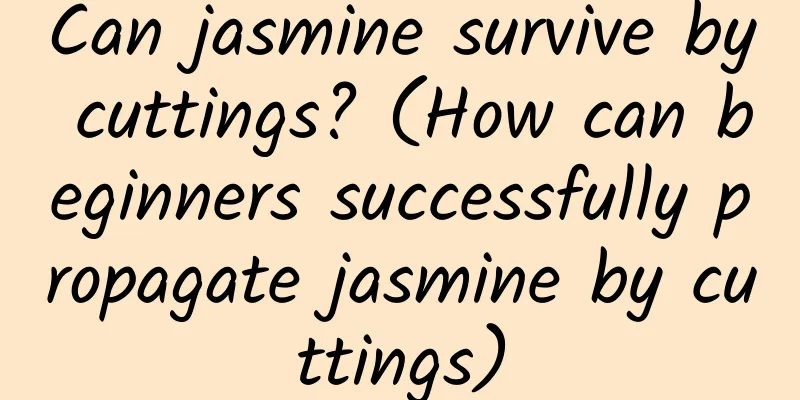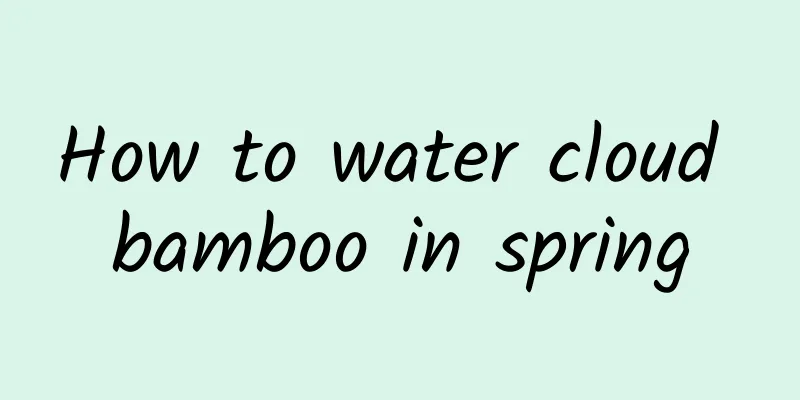Can jasmine survive by cuttings? (How can beginners successfully propagate jasmine by cuttings)

How to make jasmine survive by cuttingsJasmine has a refreshing fragrance and its flowers are white and elegant, and are loved by many flower lovers. It is completely possible to propagate jasmine by cuttings. However, if you want a high survival rate of cuttings, you need to learn some cutting techniques. I will share them with you below so that even beginners can easily make cuttings survive. First, prepare the cutting materialsJasmine branches, scissors, mineral water bottles or disposable cups, culture medium, and watering can. Second, choose branchesThe best branches to use for jasmine cuttings are one-year-old strong branches. Do not use tender branches or two-year-old old branches. Choose long branches without flower buds. This way, the pruned branches will have dead leaves and sprout new buds and grow flower buds. The pruned branches need to be trimmed into 7-8 cm long branches, leaving 2 leaves on the top. If the leaves are large, trim half of them to reduce water evaporation from the leaves and increase the success rate. Third, the culture soil is filled into the cupUse a disposable plastic cup or mineral water bottle. The bottle needs to be trimmed to the same height as the cup and a few small holes should be poked at the bottom to allow it to be water-permeable and breathable. The advantage of using a transparent cup is that you can observe the growth of the roots. Fill it with substrate, about 80% full, leaving enough height for watering. Fourth, cuttingsYou can use a small stick to poke a small hole in the nutrient soil before starting cuttings. After the jasmine branches are inserted, just compact the soil. Fifth, maintenance managementAfter jasmine cuttings, they need to be placed in a place where they cannot be exposed to direct sunlight for maintenance and management. When caring for jasmine cuttings, pay attention to watering to keep the soil moist. It is best to have diffuse light and good ventilation to speed up germination and rooting. It can be transplanted in about a month. |
Recommend
Breeding methods and precautions of strychnos nux vomica
1. Maintenance methods 1. Substrate selection: Th...
What is the most suitable concentration for spraying urea foliar fertilizer?
Urea is a common nitrogen fertilizer. It is a qui...
How to place kumquat potted plants during the Chinese New Year
1. The placement of kumquat potted plants during ...
When is the best time to change the soil and pot of Clivia? The best time to change the soil of Clivia
It is best to repot Clivia in spring and autumn e...
Strelitzia reginae pests and their control
Strelitzia reginae Hazard characteristics It main...
How to grow Daniel succulent and how to grow it into an old pile
1. How to raise 1. Pot and soil selection: When c...
What is the meaning of the red spider lily? What does the red spider lily blooming mean?
1. Meaning The meaning of red spider lily is ofte...
When is the best time to apply fertilizer to sorghum?
Time for topdressing sorghum The period from join...
The efficacy and function of lantern fruit
1. Anti-inflammatory Lantern fruit has anti-infla...
How to grow Sedum sedum
1. Breeding methods 1. Soil: Sedum multiflorum is...
How to propagate Cineraria by cuttings
1. Take the side buds This flower is usually prop...
How to grow peony, cultivation method of potted peony
1. Suitable soil When growing peonies, you must c...
How to plant Viola yedoensis seeds
Soil selection Viola yedoensis can be found in mo...
Why does your Jade Plant always lose leaves? Using this method, the branches will grow denser and more vigorous!
The Jade Plant is commonly known as the Portulaca...
Can the Dripping Guanyin be placed in the living room?
1. Can it be placed in the living room? It is a p...









